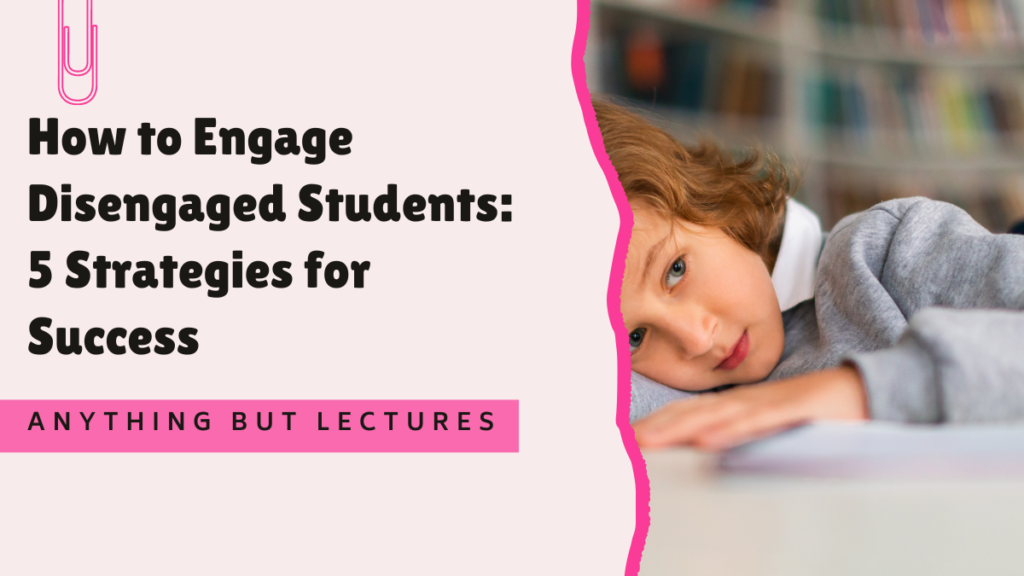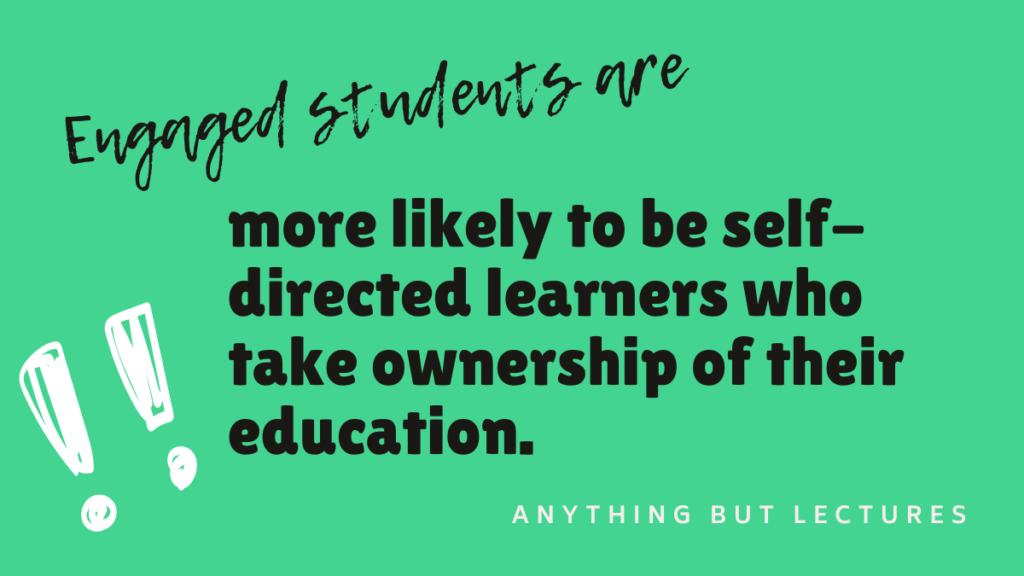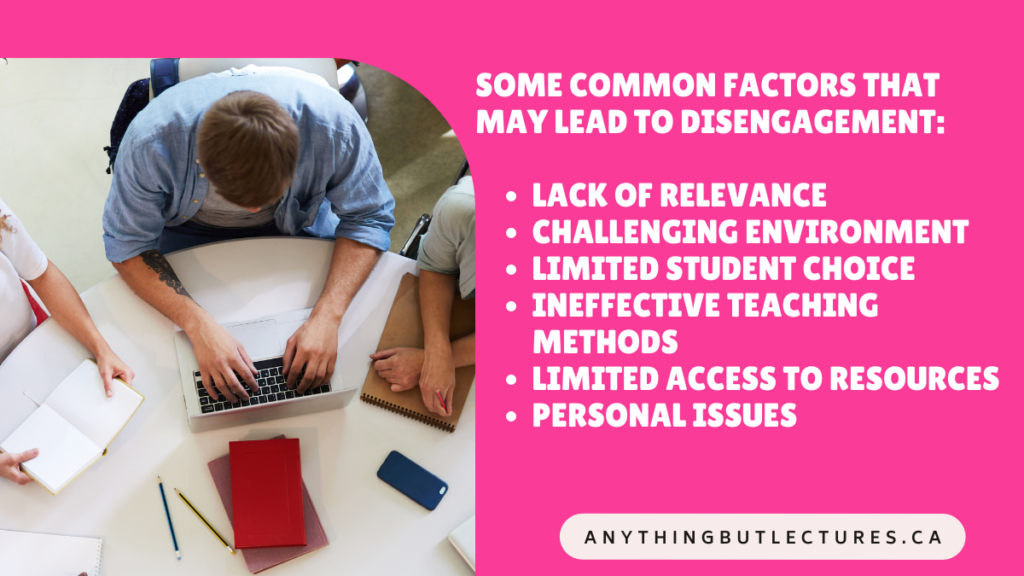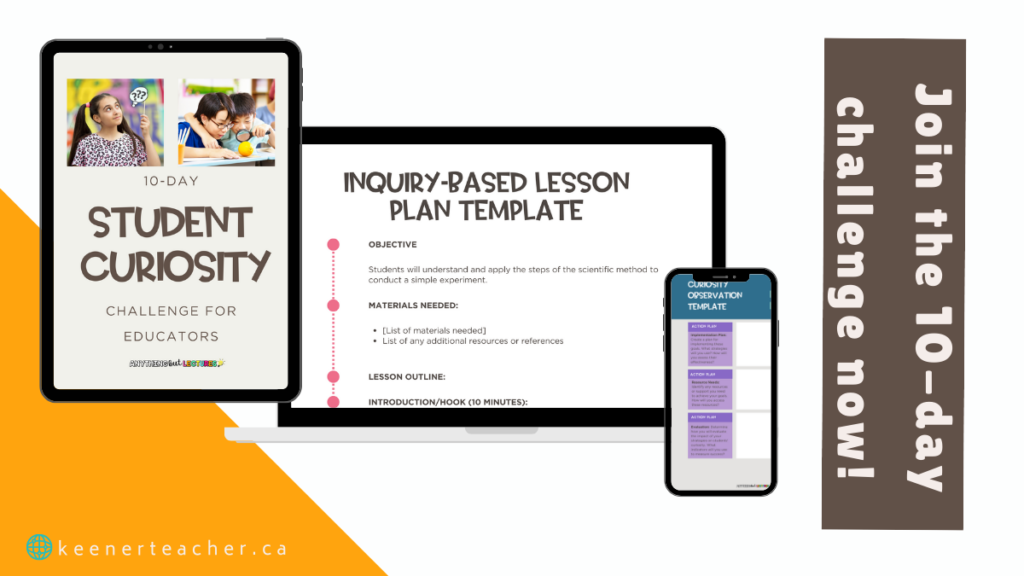Are you struggling to engage disengaged students in your classroom?
Don’t worry, you’re not alone.
As an educator, it can be frustrating when students don’t seem interested in what you’re teaching. However, there are strategies you can implement to turn those disengaged students into active participants in their own education.
In this article, we will explore 5 proven strategies for success in engaging disengaged students.
Click here to join the 10-Day Student Curiosity Challenge for Educators.

Whether you’re a teacher, tutor, or parent, these strategies will help you create a positive and stimulating learning environment. From incorporating technology to fostering a sense of belonging, each strategy is designed to capture students’ attention and inspire them to take an active role in their learning journey.
By implementing these strategies, you’ll not only engage disengaged students but also create a dynamic and inclusive classroom or learning space. So, if you’re ready to transform your classroom and enhance student engagement, let’s dive into these 10 powerful strategies.
Remember, every student has the potential to succeed, and with the right approach, you can help them unlock their full potential.
Understanding Disengaged Students
Disengagement among students is a common challenge faced by educators worldwide. It refers to a lack of interest, motivation, and involvement in the learning process. Understanding the underlying reasons for student disengagement is crucial in developing effective strategies to address this issue.
Disengaged students often exhibit behaviors such as lack of attention, low participation, and poor academic performance. They may appear bored, unmotivated, or even disruptive in the classroom. It is essential to recognize these signs early on and intervene to prevent further disengagement.
Factors contributing to student disengagement can vary from personal to environmental. Students may face academic challenges, lack of connection with the subject matter, or even external factors like family issues or peer pressure. Recognizing and addressing these factors is essential for creating an engaging learning environment.
The Importance of Student Engagement
Student engagement plays a crucial role in their overall academic success and personal development. Engaged students are more likely to be motivated, actively participate in class, and achieve higher academic outcomes. They develop critical thinking skills, problem-solving abilities, and a passion for lifelong learning.
Engagement fosters a positive classroom environment where students feel valued, supported, and connected to their peers and teachers. It promotes a sense of belonging and encourages collaboration, which, in turn, enhances the learning experience for everyone involved.
Furthermore, engaged students are more likely to be self-directed learners who take ownership of their education. They are motivated to explore, ask questions, and seek answers beyond the classroom, leading to a deeper understanding of the subject matter and a thirst for knowledge.

Signs of Disengaged Students
Identifying disengaged students can be challenging, as their behaviors may vary depending on individual circumstances. However, there are several common signs that educators can look out for:
- Lack of participation: Disengaged students may rarely raise their hand or contribute to class discussions.
- Poor attendance and punctuality: They may frequently arrive late or miss classes altogether.
- Low motivation and effort: Disengaged students may complete assignments half-heartedly or not at all.
- Boredom and restlessness: They may exhibit signs of disinterest such as yawning, fidgeting, or looking distracted.
- Negative attitude: Disengaged students may display a negative attitude towards learning and express their disinterest openly.
- Disruptive behavior: Some students may act out or create distractions to mask their disengagement.
It is crucial to remember that these signs might not be definitive proof of disengagement. However, they serve as red flags that require further investigation and intervention.
Click here to join the 10-Day Curiosity Challenge for Educators!
Factors Contributing to Student Disengagement
Understanding the factors that contribute to student disengagement is essential in developing effective strategies. Here are
- Lack of relevance: Students may perceive the curriculum as irrelevant to their lives or future goals.
- Challenging academic environment: High-stress levels, excessive workload, or an unsupportive classroom atmosphere can discourage students from engaging.
- Limited student choice: A lack of autonomy and opportunities for self-expression can diminish student motivation.
- Ineffective teaching methods: Teachers using outdated or monotonous instructional techniques can fail to capture students’ attention.
- Limited access to resources: Inadequate access to educational resources, technology, or extracurricular activities can hinder engagement.
- Personal issues: Students facing personal challenges such as family problems, mental health issues, or socio-economic disparities may struggle to engage.
By addressing these underlying factors, educators can create a more conducive learning environment that promotes student engagement and success.

Strategies to Engage Disengaged Students
Engaging disengaged students requires a multifaceted approach that addresses both individual and environmental factors. Here are ten strategies for success in fostering student engagement:
1. Creating a Positive and Inclusive Classroom Environment
A positive and inclusive classroom environment is the foundation for student engagement. Teachers should strive to create a safe and welcoming space where students feel respected, valued, and supported. This can be achieved through:
- Establishing clear behavioral expectations and consequences.
- Promoting open communication and active listening.
- Encouraging collaboration and teamwork.
- Celebrating diversity and creating a sense of belonging.
By fostering a positive classroom culture, educators can create an environment that motivates and engages students.
2. Incorporating Technology in the Classroom to Engage Students
Technology has transformed education and provides a wealth of opportunities to engage students. Integrating technology into the classroom can enhance learning experiences, promote active participation, and cater to diverse learning styles. Some effective ways to incorporate technology include:
- Interactive presentations and multimedia resources.
- Online discussions and collaborative platforms.
- Educational apps and gamified learning experiences.
- Virtual field trips and simulations.
By leveraging technology, educators can meet students where they are and create a dynamic learning environment that captures their interest.

3. Providing Hands-On and Experiential Learning Opportunities
Active learning experiences that involve hands-on activities and real-world applications can significantly enhance student engagement. By providing opportunities for students to explore and apply their knowledge, educators can foster curiosity and critical thinking skills. Some effective strategies for hands-on learning include:
- Science experiments and lab work.
- Project-based learning and group investigations.
- Field trips and community service projects.
- Simulations and role-playing activities.
These experiential learning opportunities not only engage students but also help them develop transferable skills that are valuable in the real world.
Learn more about this tip by joining the 10-Day Student Curiosity Challenge for Educators!
4. Building Relationships and Promoting Student Involvement
Establishing positive relationships with students is a fundamental aspect of student engagement. When students feel connected to their teachers and peers, they are more likely to be motivated and engaged in the learning process. Here are some strategies to build relationships and promote student involvement:
- Get to know students individually, their interests, strengths, and challenges.
- Incorporate student choice and voice in decision-making processes.
- Encourage active participation through class discussions and group work.
- Provide constructive feedback and recognize student achievements.
By fostering positive relationships and involving students in their own learning, educators can create a sense of ownership and accountability and better engage disengaged students.
5. Evaluating and Monitoring Student Engagement
Regularly assessing student engagement is crucial in identifying areas for improvement and tailoring instructional strategies accordingly. Educators can utilize various methods to evaluate student engagement, such as:
- Observing student behavior and participation in class.
- Collecting and analyzing student work and assignments.
- Conducting surveys or questionnaires to gather student feedback.
- Utilizing technology tools that track student progress and engagement.
By monitoring student engagement, educators can identify patterns, adjust their instructional approaches, and provide targeted support to disengaged students.

Conclusion
To engage disengaged students, it requires a proactive and comprehensive approach that addresses individual needs and promotes a positive learning environment. By incorporating strategies such as creating a positive and inclusive classroom, leveraging technology, providing hands-on learning experiences, building relationships, and monitoring engagement, educators can transform their classrooms and empower students to take an active role in their education.
Remember, every student has the potential to succeed. With the right strategies and support, educators can help disengaged students unlock their full potential and become active participants in their own learning journey.
Want to learn more about how to engage disengaged students?Check out these related blog posts:



